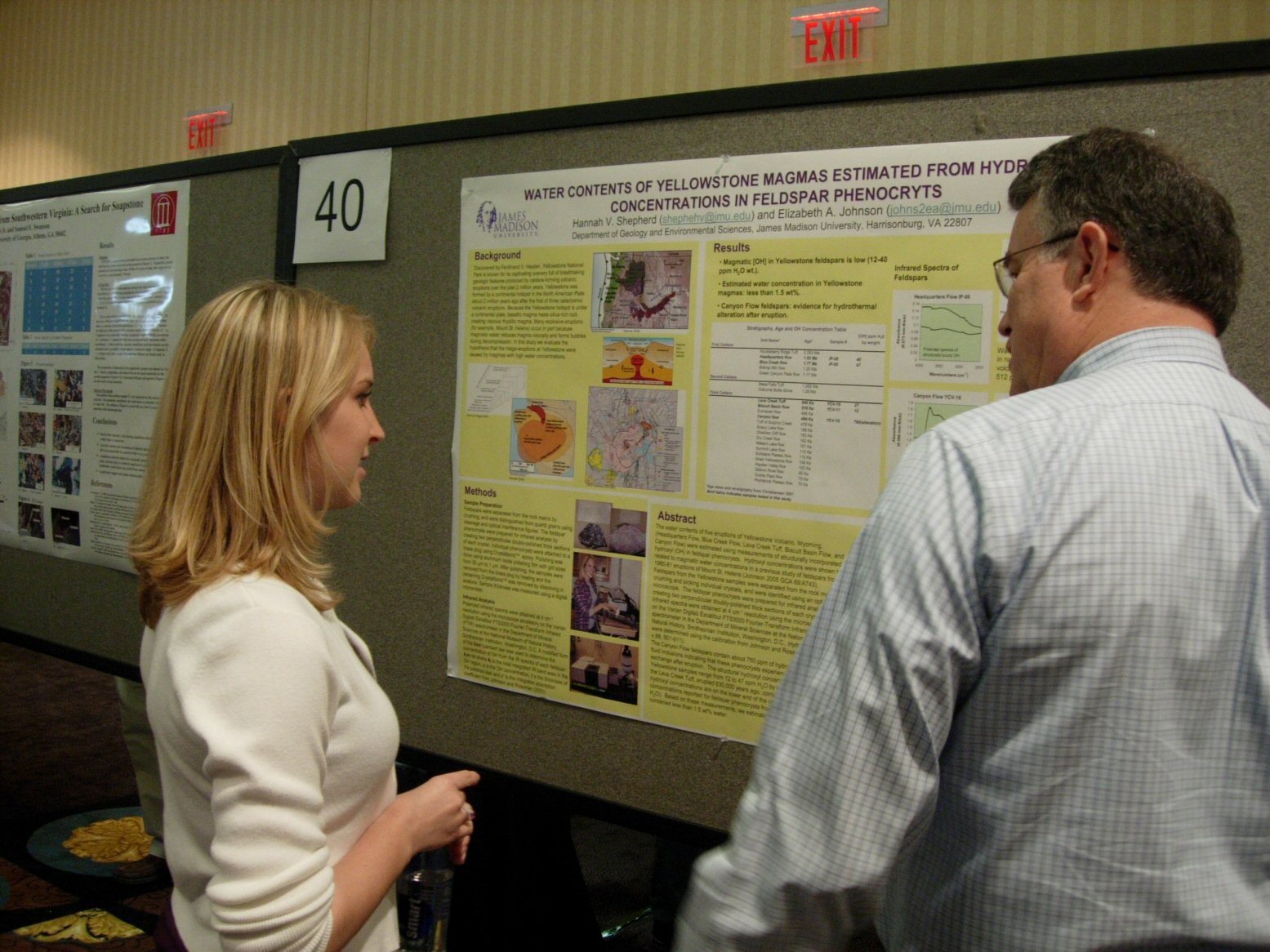See our Spring 2008 GSA poster here: .pdf
The water contents of five eruptions of Yellowstone Volcano, Wyoming , (Headquarters Flow, Blue Creek Flow, Lava Creek Tuff, Biscuit Basin Flow, and Canyon Flow) were estimated using measurements of structurally incorporated hydroxyl (OH) in feldspar phenocrysts. Hydroxyl concentrations were shown to be related to magmatic water concentrations in a previous study of feldspars from the 1980-81 eruptions of Mount St. Helens (Johnson 2005 GCA 69:A743).
Feldspars from the Yellowstone samples were separated from the rock matrix by crushing and picking individual crystals, and were identified using an optical microscope. The feldspar phenocrysts were prepared for infrared analysis by creating two perpendicular doubly-polished thick sections of each crystal. Polarized infrared spectra were obtained at 4 cm -1 resolution using the microscope accessory on the Varian Digilab Excalibur FTS 3000 Fourier-Transform Infrared (FTIR) spectrometer in the Department of Mineral Sciences at the National Museum of Natural History, Smithsonian Institution, Washington , D.C. Hydroxyl concentrations were determined using the calibration from Johnson and Rossman (2003; Am Min v.88, 901-911).
The Canyon Flow feldspars contain about 760 ppm of hydrous layer silicates and fluid inclusions indicating that these phenocrysts experienced hydrothermal exchange after eruption. The structural hydroxyl concentrations in the other four Yellowstone samples range from 12 to 47 ppm H 2 O by weight. The feldspar from the Lava Creek Tuff, erupted 630,000 years ago, contains 21 ppm H 2 O. These hydroxyl concentrations are on the lower end of the range of hydroxyl concentrations reported for feldspar phenocrysts from other volcanoes (0-510 ppm H 2 O). Based on these measurements, we estimate that the Yellowstone magmas contained less than 1.5 wt% water.